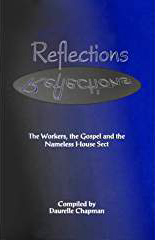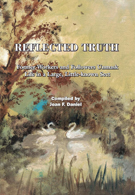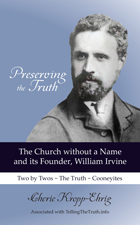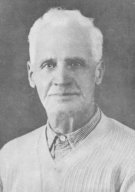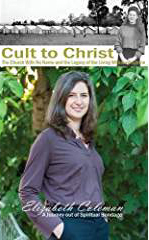When did the workers first arrive? James Jardine (Scotland) and Otto Schmidt (South Australia) in 1911-12.
Established first Meeting at Lustnau in Württemberg in February 1914.
Left in May 1914 to go to convention in England and returned after World War I ended.
The Workers who arrived after WWI were Otto Schmidt and Heinrich/Henry Grefe in 1920.
From Australia, Ern Punke,
Olga Hasting and Frieda Schmidt in 1924.
Who were the first sister workers before WW1? Henrietta Schild and Lena Schmidt tried but were not allowed in the country
After WW1? Henrietta Schildt (Wisconsin, USA) and Anna Stuhr (South Dakota/Iowa, USA) arrived.
They went to Germany in the fall of 1922. Their names show on Germany Workers lists as being there in 1922 and 1924.
During WWI, from 1914 to 1920 there were no workers in Germany.
Who were the workers after WWII? Heinrich/Henry Grefe and Fred Hanowell
Who was the first to profess? In 1913-14, the first convert was Mrs. Myer. Other converts in Lustnau were Margereth Markle, Anna Sephi’s mother Rosine Walker, Narie Melle, Mother Weidmann, Marias’ mother Rosli Maier and Wilhelm Fruh
Who was the first native to go in the work? Ella Gerisch was the first sister worker.
Who was the first worker from East Germany after the fall of the Berlin wall?
Roland Werk from East Germany was the first from that land to go in the work (around 2010-11) since the fall of the Berlin wall which was November 9, 1989.
When & Where was the first meeting? in the home of Margereth Markle, 1914 in Lustnau, Württemberg
When & Where was the first convention?
The first convention was held in Urach, South Germany in 1924 in Laderer’s workshop
The first convention held in North Germany was at Berlin-Borsigwalde.
Where are the conventions currently held? There are 5: (1) Hambühren, Niedersachen; (2) Dettingen, Württemberg; (3) Langenfeld, Rheinland; (4) Werda, Sachsen; (5) Otterbach, Pfalz
Who have the Overseers been?
Jim Jardine from the beginning of the work there.
Succeeded by Arnold Scharmen (died 1984)
Succeeded by Werner Leonhardt (current)
Succeeded by Hermann Rothmund ( from Australia)
Graham Snow is overseer for western Europe
The 1924 Germany Workers List shows five pairs of brothers and three pairs of sisters:
Heinrich Grefe (Ger) & Ernst Punke (Australia)
Edmund Reimann (Ger) & Konstantin Petruschuk (Russia)
Arnold Scharmen (US) & Willie Klemme (US)
James Jardine (UK) & Karl Wolf (Ger)
Fred Hanowell (Ger) & Carl Vogt (US)
Frieda Schmidt (South Australia) & Olga Hasting (South Australia)
Henrietta Schildt (US) & Pauline Schnitzer (Ger)
Anna Stuhr (US) & Ella Gerisch (Ger)
The countries represent birthplaces only.
THE WORK AND ESTABLISHMENT OF THE GOSPEL IN GERMANY
DURING THE 20TH CENTURY
The New Testament teaching according to the Gospel was first preached in Württemberg, Germany, during the 20th Century. The first few Gospel meetings were held in February of 1914 in Lustnau, by James Jardine and Otto Schmidt. Those who came and listened accepted the message as God’s Word, and professed. Those first converts were Margereth Markle, Anna Sephi’s mother Rosine Walker, Narie Melle, Mother Weidmann, Marias’ mother Rosli Maier, and a rather young gentleman named Wilhelm Fruh. Margereth Markle was the first person to open her home to God’s servants, and it was there that the first friends met in fellowship together.
In May of that year, the brother workers left for conventions in England close to the time that World War I broke out. After the conventions were over, they found they could not re-enter Germany. Those that professed in the worker’s earlier mission back in Lustnau continued to meet in fellowship, despite their limited understanding. Wilhelm Fruh took the meetings but it was his opinion that all the friends must first sell their possessions. Margeretha Markle realized that this was in complete contradiction of what the workers had taught them, and she forbade Wilhelm from entering her home. Because of that, the little group split up.
In 1914, Heinrich Grefe (who was born in Hanover but was actually from the United States) and Albert Vogt from Australia left for Germany. They travelled as far as England when they realized they could not enter the country. Henriette Schild and Lena Schmidt also tried but met with the same experience. Then two brother workers also tried, Albert Vogt and Otto Schmidt, but they, too, had to change their plans. They travelled to Wisconsin instead, where they found a wonderful response amongst the German population to God’s message.
After the war was over, Otto Schmidt returned to Germany and visited the faithful friends who professed before the war. Now they gathered at the Helles’ home. During Otto’s time away, Wilhelm Fruh had left the fellowship and had become a false prophet. A few had followed him like Karl Holle and Helene Hein, but they were later enlightened by the servants of God. Karl, Helene and several others were added to the little church at Lustnau, and were baptised later.
When Otto and Heinrich Grefe went to Germany in 1920, they started a mission among Heinrich’s relatives in the Hanover area, Heinrich’s home town. . Due to nerve problems, Otto could not continue in the Work and returned to England. In Urach about that same time, several women started travelling through the countryside in search of Truth. One day, a woman brought some news to Mrs. Laderer that she had found the true servants of God at Tubingen, and she asked her if they could come and visit her. She agreed. On a Saturday afternoon, two men appeared at her door. They were James Jardine and Heinrich Grefe. She seemed to immediately know that these were the true servants of God and invited them in for a meal. That night, a meeting was held for the first time in the Laderer home, which has continued since January 1921. The brothers continued having meetings every Saturday and Sunday afternoon and all were well attended. Several accepted the Truth and remained true to the end. In addition to the Laderer’s professing, the Greiner’s, Mrs. Kimmich and Mrs. Lederer’s daughters, Luise, Sopie and Lotte also decided when they reached the age of understanding.
The first convention was held in Urach, South Germany in 1924, at the Laderer’s workshop. Edmond Reimann, an evangelist worker who had come from Australia during the spring, and Fredrich Hanowell from the U.S.A. joined Heinrich Grefe and together they were active in mission work around Pfullingen. All their meetings were well attended. The Schwille family, Pauline Schnitzer and Pauline Losch made their choice to serve God in those meetings. In the meanwhile, the brothers were having meetings in Dettinger where the Muller’s and Deuschles’ families lived. Rosa Wuester lived nearby. All accepted the Gospel as God’s Word.
Edmund Reimann immigrated from Posen to Australia in 1913 after he heard of the Gospel and professed in the home of Hermann Geue, in Kapunda, Australia. While in South Australia, he also responded to the Lord’s call and went out into the Harvest Field.
It was in 1922 that James Jardine and Edmond Reimann went to North Germany. In the fall of that year, two sister workers, Henriette Schildt and Anna Stuhr, arrived. Then between 1924 and 1925, the following servants of God arrived into Germany: Ernst Punke, Frieda Schmidt and Olga Hastings. Ernst had his first companion in 1925, Ernst Reimann. They had a mission together in the Stuttgard area. As a result of their mission, the Seyfrieds, Bergers, Hermann and Elfrieda Dietrich, Mrs. Ege and her sons Hermann and Gustav plus the Eberhardts and several others all yielded their lives to the Lord.
In the Wurttemberg area during 1924, Pauline Schnitzer entered the work. Elsie Reusch followed in 1926, and Otto Kimmich and Fritz Schwille in 1927. During the years that followed, Anne Markle, Marie Greiner, Hermann and Gustav Ege, Frieda Schwille, Maria Weidmann and Kate Muller entered into the work.
North Germany
After Edmund Reimann, Heinrich Griefe and Friedrich Hanowell went to preach first in Pfullingen and later in Dehingen, before Edmund joined James Jardine at Uckermark in 1922, and after Edmond’s parents and siblings had moved to Posen. There was a great deal of interest in that mission. Besides Edmund’s parents and a few relatives professing, Mona Schwarz, Agnes Gericke, Mr. and Mrs. Lotte Bolle, Frieda Schwarz, Will and Ida Mellentin all accepted the Truth. Several of those individuals were members of the local church fellowship. The preacher got very curious about the meetings his sheep were attending and came to listen too. He was an honest man who soon recognized the Doctrine preached by God’s servants was scripturally based. He resigned his position as preacher and accepted the Truth, then later went into the Ministry.
Henriette Schild and Anna Stuhr arrived into Germany around that same time. Henriette had relatives living in the Schwedt. In the Prenzlau area, the Isaak Doring family professed. They began meetings, and with the exception of Henriette’s relatives only Marie Grussan, accepted the Gospel. The sister workers continued with their meetings in the Prenzlau area around the same time as Edmund R. and Karl Wolf moved into Berlin to help James Jardine out. Then they started meetings at Tegel, in the spring of 1923.
It was no mere coincidence that meetings were held in Tegel, as a middle-aged God-fearing woman lived there with a desperate need. Marie Gebhard was a praying woman who had been searching diligently for the Truth. God’s Word fell on her heart’s fertile ground. After many visits with the workers and a great spiritual battle, Marie finally accepted the Gospel and her family followed. Her son went into the Harvest Field in 1933. These meetings were well attended, eventually seeing 30 others being brought to the Truth. They met at the Gebhard home and Alice Heilman’s home. Alice lived with her mother. Among those that professed were the Schulz’s, Hermann and Elsbeth Krause, Grete Ruppin and her mother Mrs. Reusch, Mr. Stratenwerth and Ella Gerisch, who a short time later went into the Harvest Field, the first German sister worker.
The next meetings were held at Hormsdorf in 1923 and Frohanau, another section of the city in 1924. Arnold Scharmen and Willi Kelemme came to Germany about that same time and found James Jardine and Edmund having meetings with Karl Vogt, who was helping them out. Karl Wolf left for South Germany soon after. Arnold gradually mastered the German language and started helping out in the Gospel meetings. Those who professed in that mission were Mrs. Both, Hedwig Kominski, Meta Goltz and her mother and father Helene (Reiman) Wachholz and Dora Wachholz. Dora went into the Harvest field in 1935. Sometime later, Mr. Wacholz, Emma Weidner and Annemarie Eschrich professed. Others that professed later in the Berlin mission were Karl Fallnich (Bin-Mariendorf), Marie Koch, Mrs. Blei and a Koustantin Petruschuk, a young Russian man that attended the Baptist Seminary in Berlin. Once Koustantin recognized the Gospel as Truth, he professed and later went into the Harvest Field. However, he first returned to Russia and made several contacts in the Leningrad area. Nina Lilma, Alexandra, and several others were his contacts.
Ella Gorisch went into the Harvest Field in the spring of 1924. She was joined by Henriette in Schwedt.
The first convention held in North Germany was at Berlin-Borsigwalde.
Friedrich Hanowell and Willi Klemme went into the Pfalz area around Krottenbach, Etscherberg and Kaiserlauten in 1924 and were assisted by James Jardine at the beginning. Arnold Scharmen was having some meetings in that area. The first to accept the Gospel in the Krottenbach and Elschberg areas were the Weber and Katarius families. Following the Urach Convention in 1924, another small convention was held at Krottenbach, in the Weber home.
Ernst Punke then arrived from Kaiselauten in 1925. A Mr. and Mrs. Lutze and their daughter Freda, Richard Page, Kate Martin and several others had already made their choice in Ernst and his companion’s mission, so another mission was held in Herschweiler-Potteisheim. Emma Hoh and her four sisters, Paula Pfaff, Lina, Katje and Bertha professed in those meetings; also Durst’s and Grunders.
During the mission at Neunkirchen-Saar, Gretel Hellrigel, Emma Biendel, Else Hirzler, Katrin Jackle, the Keller’s, Lina Dichl.-Metziger, and others professed. Then some missions were held in some of the smaller towns near Kaiserlauten.
In 1925, Max Kohn arrived from Australia with George Wix from New Zealand and Edwin Schaer from the United States. George first spent time with Mr. Glotz in Berlin and learned the German language before leaving with Friedrich Hanowell for the Rhine Region. They went first to Koln, where the Giesens and Otto and Loni Brings lived. Those folks later professed and served the Lord. Their homes were the first open homes in that district. From Koln, the workers went to Wermelskirchen and Buischeid and found Anne and Rudi Gunther, Paul Schmalz, and Otto and Manny Hartman. Otto and Manny offered up their home for a three-week mission at that time, and later for the Union meetings for four years, before they went into the Harvest Field. Otto joined Karl Voigt in Olten, Switzerland in 1930, and Manny joined Pauline Schnitzer in Eisfeld, near Thuringen, Sonneberg and Neufang. From 1932 onwards, Otto and Manny have preached together as a couple in Switzerland.
In Wermelskirchen many were added to the fellowship, including Mrs. Schneider, the Friedchens, the Faubels and some of their relatives, including Else Breitenbach.
Elfriede (Friedchen) Schneider went into the work in 1920, and joined Olga Hastings. They labored seven years in Ostpreussen.
Meanwhile, Arnold Scharmen and Willi Klemme went to Karsruhe in 1925-1926 where they were joined by Karl Konschak. The three brother workers held a mission together in Kleinsteinbach where a large church was later established that included the Oscars, Legiers, Jenzes, Geisingers, Vogels and Alma Schneider, as well as others.
Around that time Ernst Punke was laboring in Stuttgart, when Lotto Dietrich came and visited her brother Herman. She was impressed by the Gospel and related her experience to her sister Hanna. Upon Hanna’s return to Dusseldorf where she lived with the Muller family, she spoke to them of her conversation with Lotto. They were very impressed too. Shortly after, Friedrich Hanowell came and visited Hanna, and spoke with Grete Muller. A mission was held in the Dusseldorf Region with Hanna Dietrich, Herthe Moller, Karl Gerte, Wilma Muller, Karl and Liesel Manus, Otto and Marta Jaus, Konrad Fischer and later Gertrude Starke and Hildegard Jaus all accepted the Gospel. The Muller family moved to Berlin in 1920, and Wilma entered the work in 1934.
The first convention held in the Rheinland region was in the Wermelskirchen in 1927. After that, George Wix and Friedrich Hanowell laboured in the regions of the Rheinland and Ruhrgebiet where Arnold Scharmen later followed with Karl Voigt, then went into Bochum. In Bochum, Lotte and Gerte Dietrich, Mrs. Martha Laun and the Ewigs all accepted the Gospel. Hermann and Toni Dexel professed at Duisburg and the Skolies and the Schulzes at Oberhausen. The Schillings, Hellings and Kosters professed at Ohligs.
Towards the end of 1925, Ernst Punke and Max Kohn went to Greifswald where among others Lucie Blank/Stridde, Frieda Kasper, Mrs. Becker, the Liliputs and Mariechen all accepted the Gospel. Those who labored with Max Kohn between 1926 and 1928 were Hans Craig, Karl Wolf, Friedrich Hanowell and Robert Breitzmann. In 1928, Edmund and Max Kohn labored in Wolgast where Mrs. Hannemann, Ottilie Bartels and Trude Muller were found. Mrs. Koppen was the only one to profess at Buddehagen.
Near the end of 1928, Edmund Reimann and Otto Kimmich went into Zinnowitz, (Usedom) and lived in the home of Mrs. Dittmer. They preached the Gospel first in Peenemunde where they found the Reichard and Ehmke families who professed. Irmgard Reichard left from Hanover for Denmark to go out into the work.
After Otto K. left for Spain in 1930, Otto Wehrstedt continued helping Edmund in the mission. Edwin Ludewig joined him later in 1932. Then in 1933, Frieda Schmidt and Kate Muller went to Pasewalk with Hildegard Dittmer, whose mother had made her choice earlier to serve the Lord. She had professed in Edmund and Otto W.’s meetings. Hildegard entered the work in 1936, and during that next year her sisters and brother accepted the Gospel. Before Peenemunde was of military importance, Arnold and Werner Gebhard had a mission there.
In the meanwhile, Otto Kimmich, Fritz Schwille, Anna Markle (1927), Elise Reusch (1926), Kate Muller and Marie Greiner all offered for the Harvest Field. Hermann and Gustav Ege offered sometime later. It was earlier that Fritz and Heinrich Grefe with Robert Breitzmann labored in the Hanover, Anderten, Celle and Hamburen regions. Lina Weber and Anna Heise were the first women to accept the Gospel. In Hamburen, Ernst and Emma Knigge, Liselotte Knigge-Ehmke and Hermine and Mariechen Grunhagen made their choice. Later Oswald Graske, Otto K., Fritz Schwille and Heinrich Gifhorn left for Ehmen, Longlingen and other places to preach. Those first professing families in that area were the Sturms, Liehes, Lamers, Mrs. Dolle, Frieda Vadenger, Mrs. Thiel, Gerda and Hilda. That first convention was held at Heinrich’s relatives in the Hanover region, during 1932, 1933 and 1934. Later the convention was held at Hofer.
Edmund Reimann and Robert Breitzmann were the first to bring the gospel to Ostpreussen in 1927-1928, after first preaching at Elbing and Aschbuden. Those that professed at Elbing were Mr. and Mrs. Weinschenker, Mrs. Gischkowski and Mariechen. The first to profess at Aschbuden were the Neumann’s, Mrs. Krause, Mrs. Beldig, Mrs. Bolitz and Minna. Olga Hasting and Elfriede Schneider took over that field eventually, and during their mission in Konigsbert, Mrs. Neuman, Trude Neumann/Vogtlin, Mrs. Bleidau and Mrs. Rohde and others, all accepted the Truth. They moved from Konigsberg to Wolgost and the nearby Island of Usedom.
Around 1920, Robert and Willi Klemme came into the Schleswig-Holstein area with co-workers and had some meetings in Flensburg, Schleswig and Kaltenkirchen. The friends there were the Kratzmanns, Thiedes and Edith Steppat, whose children Christian and Helga went into the work later. The first brothers in Schlesien during 1932 were Karl Wolf, Oswald Graske, Erwin Ludwig and Otto Wehrstedt. They arrived into the Neisse and Neustadt areas in 1932, and found Heinrich and Ida Hanske, Margarethe and Mariechen Thiel who accepted the Gospel. Otto Wehrstedt died while in Neisse in 1932, but the missions continued at Schlesien and Schnellewalde, where Bertha Fischer made her choice. At Breslau, Brieg Oblau and Kattowit, Mrs. Strickner, Maria Hund, Martha Peisiger, Klara Mayer and others were among the first to make their choice.
Willi Klemme and Karl Wolf started Gospel meetings between 1925 and 1926 in Thuringen, particularly in the Gotha, Eisenbach, and Waltershausen areas. Henriette Schildt and Elsie Meyer began meetings in 1928 and had a good response, except at Neufang. Eventually 12 took their stand for Truth: the Flurschutzes, Schultheiss, Karl’s, Lotte Steiner, Anna Baumann and Anna Wicklein. Prior to that time the sisters laboured in Eisfeld where they found the Schmidts, Langmuts and others. The mission at Sonneberg found a few willing persons which were later added: Mr. Eckardt, Ida Scharfenberg, Liesbeth, Eichhorn, etc.
Between 1927 and 1928, the work began in Sachsen. Friedrich Hanowell and Fritz Schwille went to Freiberg first but found no real interest. Then they moved on to Chemnitz and a few were found; namely, Anna Viertel, Olga Zentsch, Liesel Wappler and Anna Pulzi, who worked in Chemnitz. Other missions followed in Pappendorf, where Mrs. Heinzig was found. Previous to that, the brothers seemed to be heading for Mossen when they noticed an elevated village, the Village of Marbach. As they entered the lower part of the village, they had a strong feeling they should stay and begin a mission. Their meetings were well attended by approximately 30 people. A Mr. and Mrs. Parch, Hedwig Leonard and Werner and Heinz’s mother was the last to come to the mission. The Parchs opened their home for the meetings later. Then the brother workers went to Frankenberg where the Anna’s sisters were found, who accepted the Gospel. Mission work continued at Pappendorf and Mrs. Heinzig was found.
In the meanwhile, Friedrich was very active with co-workers Oswald Graske and Konrad Fischer in Dubeln. There they found Else Trager, Mr. and Mrs. Lange and a few others who professed. Rosa Lungwitz was found at Hainichen, Hilda Schmidt and Mrs. Hahner was found later in Dobeln. Then in 1932, the brothers went to Seifersback where they found Erich and Hedwig Lischik (Lisa’s parents), Karl and Frieda Neumann, Hedel Schlegel, Hulda Berndt, and Hulda and Lina Kohler who all accepted the Gospel. Helene Seifert was living in Schonborn-Dreiwerden (Hans Joachim and M.’s aunt) at the time and was a member of the Church in Seifersbach, but she accepted the Gospel.
Fritz Schwille and Hermann Ege went into the Vogtland Region during 1932, and contacted Ella Gerisch’s relatives. As a result, several small circles of friends were formed who all met together in fellowship in Falkenstein, Auerback and Beerheide. In 1935, Fritz and Ernst Knoll as his companion went and laboured amongst the friends who were added to the church before they left for Werda. Near the end of that year they went into the Erzgebirge region and had a very fruitful mission in Neuheide, Schonheiderhammer, Oberstutzengrun, Rothenkirchen, Zscharlau and Griesbach. Those missions ended in late summer of 1937.
Fritz and Gustav Ege labored at Raschau and Scheibenberg till 1939. They found a few people who accepted the Gospel. Fritz returned with Werner Gebhard. into the Erzgebirge and Votland regions during 1942 and because of his faithfulness and obedience to the God of Heaven, he was sentenced to death by a Military Tribunal Court and pardoned, but murdered a few weeks later.* Werner was arrested in 1942 by the Gestapo and was held in a detention centre for seven weeks. This ended with his incarceration in a concentration camp till the end of World War II.
Pauline and Anna and Marie Greiner then left for the Erzgebirge and Vogtland areas during 1936, and stayed there for the first few years of war. Otto Kimmich and Oswald Gaske went into East Erzgebirge and the Vogtland areas in 1936 and 1937. Eventually, they discontinued the meetings there, but not before they found a few souls in Lengefeld.
The Gospel work began in Hessen after Karl Voigt’s visit to his relatives in Marburg-Cappel in 1932. There he preached a brief six-week school mission that was well attended. Otto Kimmich and Herbert Punke continued that mission till the spring. Johannes Kuhn and his wife Elisabeth, Lieswitt Rauch and a few others all accepted the Gospel and kept a true testimony for their children, one of whom, Elisabeth Kuhn, entered into the Harvest Field.
The National-Socialistic Regime held many different positions regarding all meetings held at this time. In most parts of the country they tolerated them in the beginning but mostly the meetings were disallowed. Early in 1934, any meeting was prohibited in the Pfalz and Saarland areas and later the Erzgebirge and Vogtland regions were affected, but only towards the end of the war. This resulted in Werner Gebhard’s arrest in 1943. He was detained in a concentration camp. Wilma M. took over the care and responsibility of our friends in that field, encouraging them to stay true. Besides Fritz Schwille being murdered in the gas chamber* and Werner’s incarceration at a concentration camp, Frieda/Frida Schwille, aged 34 was murdered in a gas chamber too (Nov. 30, 1944).* Pauline Schnitzer, Luise and Sofie Lederer and Erich Lischik all spent time in prison, while Gustav Ege was detained a short time in prison.
* It was later discovered that Fritz Schille was not executed. He was captured by the Soviet Army on the Eastern Front in 1942 and was sent to a POW labor camp in Siberia, where he served on the Russian front as a stretcher bearer. Another account stated: "In order to make a stand against the war out of religious conviction...refused military service. As a result, he was pardoned and sentenced to death by the Reich Military Court in Berlin. After three months on death row, he was pardoned and send to the Eastern Front, where, as was only learned many years after the war, he died in Russian captivity in January 1943." After the fall of the Soviet Union and many records were released from that era. Sister workers have visited the site of the camp where he died and examined the records regarding his death there.
THE END
(Translated by R.Buchi, January 13, 2009)
Read also:
Accounts by Sofie and Luise Laderer and Pauline Schnitzer
Account by Gebhard Werner
Ruta Sprogis Labored in Germany
JAMES JARDINE: Was one of three brothers who were workers: Walter, Nichol & James (Jim). They were from Scotland, but had mixed blood, Scottish and French. Jim was quite the scholar, knew five languages well enough to preach in all of them. He traveled a lot preaching around the world. Reportedly, their French side came from hundreds of years ago in France when the Catholics chased out the Protestants out and some went to Scotland. James is shown on the 1905 Workers List as entering the work in 1904.
ARNOLD SCHARMEN: "Arnold was born in September, 1893. In 1916 he went into the work in Michigan, USA. He also laboured awhile in Iowa before he went to Germany in 1923. He laboured in various fields in here in Germany. In 1935-36 he had to leave here and he laboured in Denmark til he returned to America during the war. After the war, Arnold returned to Europe and spent awhile in Switzerlandf til the way was open again for him to return to Germany in 1948 ." (Werner Leonhardt at Funeral Service for Arnold Scharmen in Dusseldorf, Germany, July 6, 1984)
ANNA MARKLE: "I first met Arnold in 1923. He came to our home in Lustnau, where Henriette Schildt and Anna Stuhr were...Arnold has served us here more than 60 years..." (A.M. spoke at Funeral Service for Arnold Scharmen in Dusseldorf, Germany, July 6, 1984)
HENTIRETTA/HENRIETTE SCHILDTwas born August 30, 1889 in Prescott, Wisconsin. She went in the work in 1911, and labored in Wisconsin, Minnesota, North Dakota, as well as Germany. She died April 17, 1973 at age 84 and is buried in Stuttgart, Germany.
ANNA STUHR was from the large South Dakota/Iowa Stuhr family mentioned in the Iowa Account: “ John Doak and Ed Pool held meetings near Persia in 1911, when the Stuhr family professed.” Five siblings went in the work from that family. Anna is listed under Missouri on the 1947 Workers Lists for North and South America. Anna was in Switzerland in the work until she died there in 1980 at age 96.
OTTO SCHMIDT is No. 51 on the 1921 Staffordshire Workers Photo (list shows “Otto Smith”)
On the 1913 photo of Crocknacrieve, Otto is in the group photo of 19 men, with 5 on the front row. Otto is in the middle.
OTTO SCHMIDT was the first person from Australia or New Zealand to leave his homeland and go preach overseas; Alf Vogt was the second to leave, but WWI broke out while he was in England enroute to Germany and instead Alf went to the USA. Mervyn (Merv) Schmidt of Mildura, Australia, is the only child of Otto and Sarah (Heath) Schmidt, of the Staffordshire, England convention grounds. Otto’s Grandparents came to Australia in the1850's from a place in Germany called Genthin, located East of Berlin. They were Moravian Brethren and were being persecuted. So along with others, they emigrated and started a new life in Bethel in South Australia. (See Bethel Mission Story).
Reportedly Wm. Irvine asked Otto at the 1911 Convention whether he had ever thought about going in the work and Otto replied that he had. Wm. Irvine then said, "Can you be ready in two weeks time?" Otto Schmidt is shown on the Workers List for South Australia for the years 1911-1912 and 1912-1913. He was in the work two years before he went with Jim Jardine in 1913 where they were the first workers to go to Germany.
“My Father, Otto Schmidt, was in the work in 1911 with Adam Hutchison in South Australia; and in 1912, he was with Sam Jones in SA. William Irvine visited Australia at the end of 1912, and early 1913 for conventions. When he returned to Ireland, he took my Father, Otto Scmidt, with him. After the 1913 Crocknacrieve Convention, Wm. Irvine sent Otto and Jim Jardine to Germany, the first workers to go there. My Father could speak German , so that may have been why he was chosen., He was only about 21 years old. Otto is in the 1913 Crocknacrieve convention photo of all the workers there.
Mervyn Schmidt stated that sometime after the Crocknacrieve convention in 1913, his father,
After spending another year in England, it was decided that it would be wise for Otto to go to Wisconsin to preach, as there were a lot of people of German background living there on the farms that he could relate to. It was considered safer for him there with a name like Schmidt, having spent time in Germany. So in 1915, Otto went from England to Wisconsin. Alfred (Alf) Vogt and Otto preached in Wisconsin for about five years and about 80 people professed who were of German heritage.Otto Schmidt, and James Jardine went to preach in Switzerland, but they didn’t stay long, maybe 3 or 4 weeks, before going on to start a mission in Germany in 1913. He does not know the reason they went to Switzerland first. It may have been to see if there was any interest there, or perhaps James Jardine had a contact there. Otto had no relatives there to the best of Mervyn’s knowledge, there were no friends in either Germany or Switzerland prior to 1913, and they had no one to profess while they were in Switzerland.
During their first year in Germany, the German Secret Service questioned my father as to why he was in Germany. With a name like Schmidt, coming over to Germany from England with out any employment or permanent address in Germany, you can understand why he was questioned. Otto and Jim returned to England for convention and were not allowed back into Germany. Soon after the1st World War started.Since James did not know the German language, Otto had to do all the preaching. They stayed in Germany for six months to a year (1913-1914), and started a meeting there. Mrs. Maier was their first convert. Also the Märkle Family professed, and there were a number of others as well. In 1914, Alfred Vogt from Australia went to Germany to join Otto Schmidt. When the war broke out, they both fled to England.
In England, Otto preached with Sam Dallas for a few months. During that time, the Heath family professed. It was also at this time that my Father helped start the convention at Dimsdale Hall on the Heath family property, where the Staffordshire photo is taken with the 200 hundred or so workers. The convention was later transferred to the Stocks Farm also owned by the Heath Family. It is still held there today.
Clem Geue, a brother worker from Australia said that Otto: “...joined up with Jim Jardine. You may have heard of him, and they pioneered the work in Germany in 1913…George Walker asked them…to go up to that part (Wisconsin) because there were Germans there. And he preached there for about four years…very successful missions…and it was that convention ground ( Marion, WI) that Otto Schmidt helped to start in 1916...”
Clem Geue mentioned that Otto Schmidt worked for his father and that Otto was one of the 23 people who walked out of the church that famous day in the Bethel Mission pioneered by Sam Jones. Otto Schmidt was in his home the day Clem was born. While in America on convention rounds, Clem spoke at the 1978 Marion, Wisconsin convention, one of the places where Otto had labored.
The Bethel Mission List confirms this and shows that Otto Schmidt was 21 years old when he professed, and that he went into the work in 1911 and “took the gospel to Germany with Jim Jardine in 1913. During World War I, he laboured in the USA. He returned to Germany afterwards, but his health broke down. He married and returned to Australia some years later and settled at Mildura, where his son Mervyn now lives.”
After the War ended, Otto returned to Germany in 1920. So did Jim Jardine. They found the little church they had started previously still going, despite the war. Some months later, Otto became ill and after about six months in the hospital in Germany, he went to the Heath family home in England to rest and recuperate.
When Otto's health did not improve, he left the work. In 1928, he married Sarah Jane Heath. They lived in England for a couple years and then moved to Mildura Australia, where Otto’s brother and sister were living and offered them work. It was in the middle of the Great Depression and Otto was over 40 years old then with little money and poor health.
Read: Account of Luise and Sofie Laderer's Prison Experiences in WW II
Read: Friedrich "Fritz" Schwille,
Prisoner of War in WW2
Read: Ruta Sprogis Labored in Germany; Ruta Sprogis was born in Lithuania in 1938, and after the Russian takeover, she was deported with her family to Siberia. She eventually made it to Germany, where she heard workers and professed in 1959, going into the work in 1962. Because she spoke both Lithuanian and Russian, she was one who made visits to the Soviet Union as often as possible during the communist years, to visit friends and follow up on new leads. She died of cancer in Germany in 2001. Thus far she has been the only Lithuanian worker. Workers are free to be there in Lithuania now.
Read:
Alma Lee & Edith Hanson's POW experiences in Germany and Norway.
**Read: Freida/Frida Schwille: Commemorative speech in memory of her murder November 30, 1944.
Additional or corrected information on this country will be very welcome.

 REPRESENTING THE LARGEST COLLECTION OF 2X2 HISTORICAL DOCUMENTS ON THE INTERNET
REPRESENTING THE LARGEST COLLECTION OF 2X2 HISTORICAL DOCUMENTS ON THE INTERNET
 Perry, Oklahoma Conv, 1942
Perry, Oklahoma Conv, 1942
